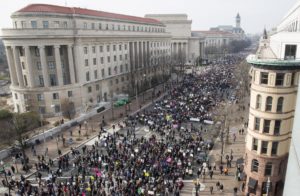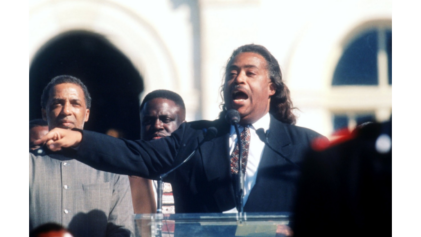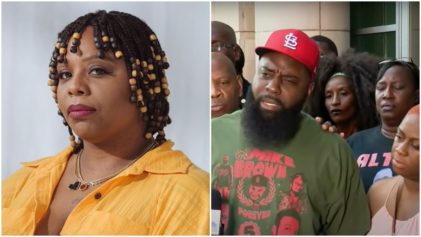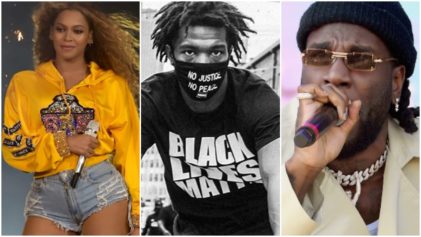
“My husband was a quiet man, but he’s making a lot of noise right now,” said Esaw Garner, the widow of Staten Island father Eric Garner, who died from a police chokehold in July but whose killer, police officer Daniel Pantaleo, was not indicted by a grand jury more than a week ago.
“Let’s keep it strong, long and meaningful,” she said.
“This is not something new that just started,” said Trayvon Martin‘s mother, Sabrina Fulton, who has been a featured speaker at too many marches since Trayvon was killed by George Zimmerman in February 2012. “This is something that’s been going on. But I truly believe by us being here together, and united, that God sits high and looks low and the light is also shining on what’s going on.”
Lesley McSpadden, whose son Michael Brown was killed in Ferguson, Missouri, looked out at the mass of humanity—Black, white, Asian, Hispanic, young and old—and said, “What a sea of people. If they don’t see this and make a change, then I don’t know what we gotta do. Thank you for having my back.” The “they” the crowd was focused on this time was members of Congress. Rev. Al Sharpton, whose National Action Network organized the march along with the National Urban League and NAACP, listed the demands he wanted to see Congress meet: lower the “threshold” that police are protected by, create a special force in the Justice Department to handle police brutality cases and appoint special prosecutors on the local level to deal with police brutality cases. “This is not a Black march or a white march, this is an American march for the rights of the American people,” Sharpton told the stirred crowd. “We don’t come to Washington as shooters and chokers. We come as the shot and the choked to help deal with citizens who can’t breathe in their own communities.” John H. Crawford, the father of John Crawford III, the young Black man who was shot and killed by a police officer in a Cleveland Walmart while holding a toy gun he had taken off the shelves, had an additional message for Congress. “When you don’t have balance on the inside, you sure aren’t going to have balance on the outside,” he said. “We need a more diverse community within Congress to make things happen.” Kadiatou Diallo, whose son Amadou was killed by New York officers in 1999 in a case that grabbed many headlines, proffered a 2000 cover of Time magazine illustrated by Amadou’s face. “Today, 16 years later we are standing still and demanding the same thing,” she said. The crowd heard Levar Jones, whose name became widely known in September when he was shot by a police officer at a gas station in South Carolina after the officer told him to get his license. “I believe that there is going to be change,”Jones said, thanking the crowd for their support, and urging them to keep their calls for justice alive. “When you leave here, don’t let this end here,” he said. The crowd also heard from the girlfriend and 2-year-old daughter of Akai Gurley, who was shot by police in a New York stairwell last month, and the mother of Tamir Rice, the 12-year-old who was shot and killed by police at a park in Cleveland while he was playing with a toy gun.
Though organizers were predicting 5,000 attendees at the Washington march, published reports estimated the crowd at many thousand bigger than that—some estimates went as high as 25,000. Washington, DC, police don’t do crowd estimates.
While protesters were listening to the grieving families in Washington, large demonstrations also were being held across the country in cities like San Francisco, Oakland, Boston and New York City.


